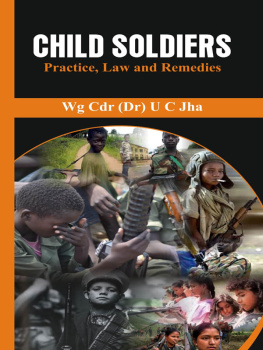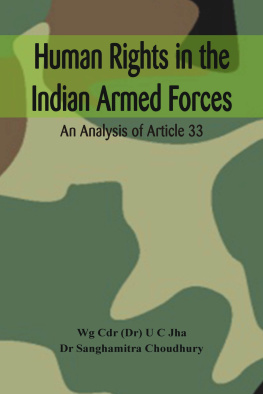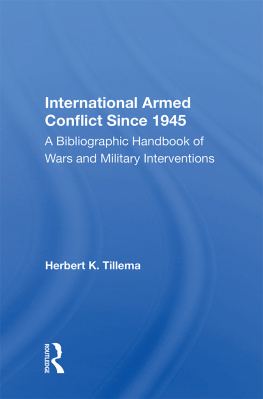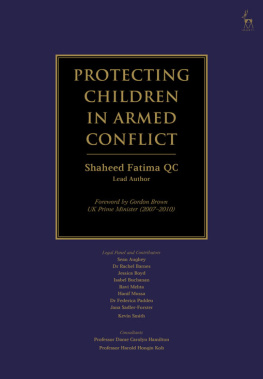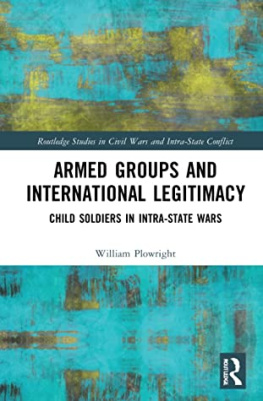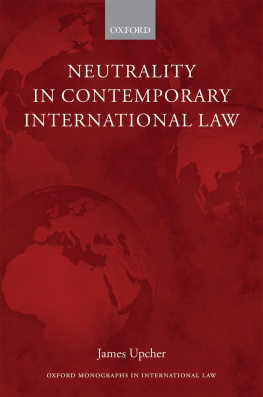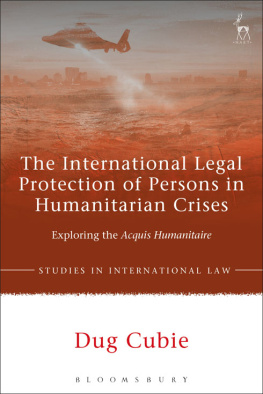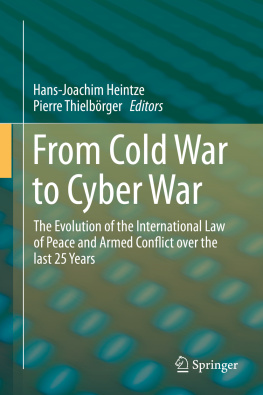Published by
Vij Books India Pvt Ltd
(Publishers, Distributors & Importers)
2/19 (Second Floor), Ansari Road, Darya Ganj
New Delhi 110002
Phones: 91-11-43596460, 91-9811094883
e-mail :
Copyright 2014, Author
ISBN: 978-9-382-65277-9
All rights reserved.
No part of this book may be reproduced, stored in a retrieval system, transmitted or utilized in any form or by any means, electronic, mechanical, photocopying, recording or otherwise, without the prior permission of the copyright owner. Application for such permission should be addressed to the publisher.
Preface
History is full of examples of armed conflicts that have plundered the environment. In the third Punic War, Roman legions, salted the ground to prevent the Carthaginians from challenging Rome; during World War I, the British set Romanian oil fields on fire; and during World War II, Germany and the Soviets adopted scorched earth tactics, other than the US dropping two nuclear bombs over Japan. States have continued to deliberately destroy the environment with impunity even in the modern era, i.e., post-World War II. A few examples are the US bombing of Korean dams in the Korean War of 1950-1953 and the extensive use of chemicals and environmental modification techniques during the Vietnam War of 1961-1975; the targeting of Iranian oil installations by Iraqi bombers during the Iraq-Iran war in the 1980s; the detonation of 720 oil wells and pumping of enormous quantities of Kuwaiti oil into the Red Sea by Iraqi soldiers during the Gulf War of 1990-1991; the intensive bombing of petrochemical plants, fertilizer-processing factories, and oil refineries in Kosovo by NATOs in 1999, resulting in the drainage of large quantities of toxic chemicals into the Danube; the catastrophic environmental damage wreaked in Afghanistan and Iraq during a decade of military operations by the US and allied forces since 2001; the extensive damage inflicted on infrastructure in Lebanon in the conflict of 2006; the targeting of fuel stations and tanks during Israels military operations in Gaza in December 2008-January 2009, which severely contaminated soil and groundwater; and the use of chemical weapons in Syria in 2013.
The use of chemical weapons in Syria in August 2013 has reportedly caused nearly 2000 casualties. The use of explosive weapons in populated areas has been identified as a major factor responsible for the forced displacement of population in the country. Since March 2011, the bloody and complex civil war has driven nearly three million Syrians into neighbouring countries as refugees. Many more have been internally displaced and are in need of humanitarian assistance. The extensive use of cluster munitions, white phosphorus, high-explosive devices, depleted uranium (DU), landmines, and the use of an excessively large quantity of conventional weapons in international armed conflict (IAC) have made recovery more or less impossible. Evidence gathered by some scientists after the Gulf War, linked DU to birth defects and long-term illnesses, including cancer, in Iraq.
The scenario is equally grim in the sphere of non-international armed conflict (NIAC). Conflicts have affected important wildlife habitats in numerous countries since 1990. NIACs often take place in areas where there is little governmental control. Few public services are available to the hundreds of millions of people inhabiting these remote areas. In these conflicts, the military and the non-state actors deliberately and indiscriminately target the environment in order to deprive the opposing troops of cover, food and water. NIACs are marked by the use of landmines, violation of protected areas due to troop movements, poaching for food and scorched earth practices. The government forces as well as non-state actors are increasingly plundering natural resources to finance their operations. The refugees and internally displaced persons, who require shelter, food, water and cooking fuel, also damage the environment.
The destruction of habitats and the resultant loss of wildlife have been the most common and far-reaching impacts of NIACs on the environment. When large numbers of displaced people are temporarily resettled, they often clear the vegetation to farm and to obtain firewoodpractices that swiftly lead to deforestation and erosion. Since internally displaced people are often located in ecologically marginal and vulnerable areas, the ability of the environment to recover subsequently may be limited. With the destruction of the habitat, certain plant and animal species may become threatened locally, or even extinct. In areas of conflict, troops often hunt large mammals in great numbers to obtain food. Further, during an armed conflict, those in power may be in need of immediate revenue. To fund their military activities, they may turn to commercial-scale extraction of natural resources such as timber, ivory and diamonds.
Military forces all over the world are also responsible for damaging the environment during their peacetime activities and in the post-conflict period. There are reports that presence of the Indian and Pakistani military in Siachen is taking a toll on the ecologically fragile environment. The global consumption of petroleum for military purposes is about six per cent of the total world consumption, or almost one-half of the total consumption of all developing countries combined.1 Together with developmental issues, all these factors contribute to global warming. It has been predicted that global warming will have a severe impact on food and grain production, water resources and human settlements. It will give rise to mass movement and increase the risk of violent conflict, and is likely to cost the world trillions of dollars. The majority of those affected will be from East Asia, South East Asia and South Asia. With the worlds population set to rise from six billion to nine billion people in the next half-century, there is a need to improve the management of our atmosphere, air, lands, soil, and oceans.2
Although armed conflict is a recurring feature, little effort has been made to limit the environmental effects of war. Today, there are a number of laws and regulations that are meant to restrict armed conflict in various ways. This legal framework consists of a body of declarations, conventions and treaties aimed at regulating the various aspects of warfare. However, the standards set by most conventions and protocols have proved inadequate in terms of preventing and redressing environmental degradation caused by armed conflict. International law has serious drawbacks and it seems impossible to prosecute an individual for environmental crimes arising from IACs or NIACs. Domestically, offences against the environment are generally dealt with as regulatory violations that fall under discrete parts of environmental statutes rather than as offences covered by central pieces of criminal codes. A number of environmental offences have been recognised as such following a public outcry over specific incidents.3
Because of these shortcomings, efforts have been made by activists and academics to draw the attention of the international community to the protection of the environment during armed conflict. This book attempts to highlight instances of the environmental devastation caused by armed conflict and arrive at a possible solution to overcome the lacunae in the field of international humanitarian law. The first chapter is introductory; besides defining the term environment, it surveys the literature relating to environmental damage during armed conflict. The second chapter discusses environmental devastation caused by international armed conflict, taking up examples spanning from World War I to the Israel-Palestine conflict of 2009. Environmental damage by NIACs is covered in the third chapter, which covers 16 such situations. Militaries are the prime users of sources of energy, especially oil, and besides being normal polluter are also and special polluters, producing toxic and radioactive wastes. The environmental damage caused by armed forces, primarily during training, garrison duty and weapon-testing have been discussed in the fourth chapter. The fifth chapter of the book reviews the treaty regime and the provisions of customary international law with respect to the protection of the environment and assesses their effectiveness. The last chapter, chapter 6, presents various options that could help to overcome the legal vacuum with respect to the protection of the natural environment during armed conflict, and also contains recommendations aimed at the United Nations, governments and the armed forces.


